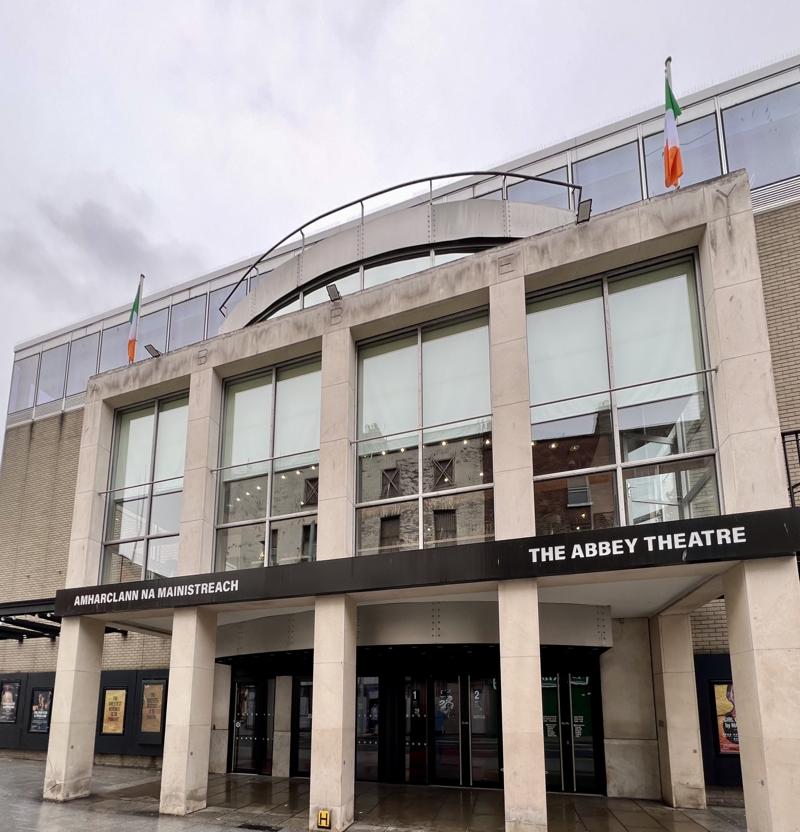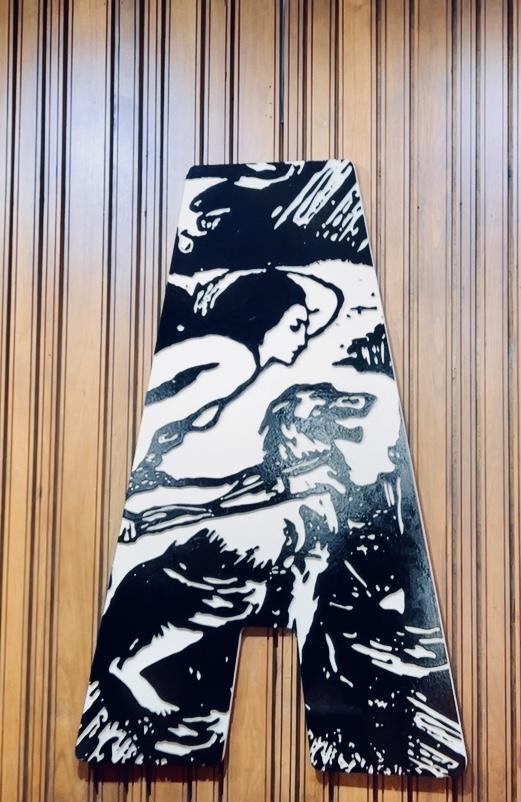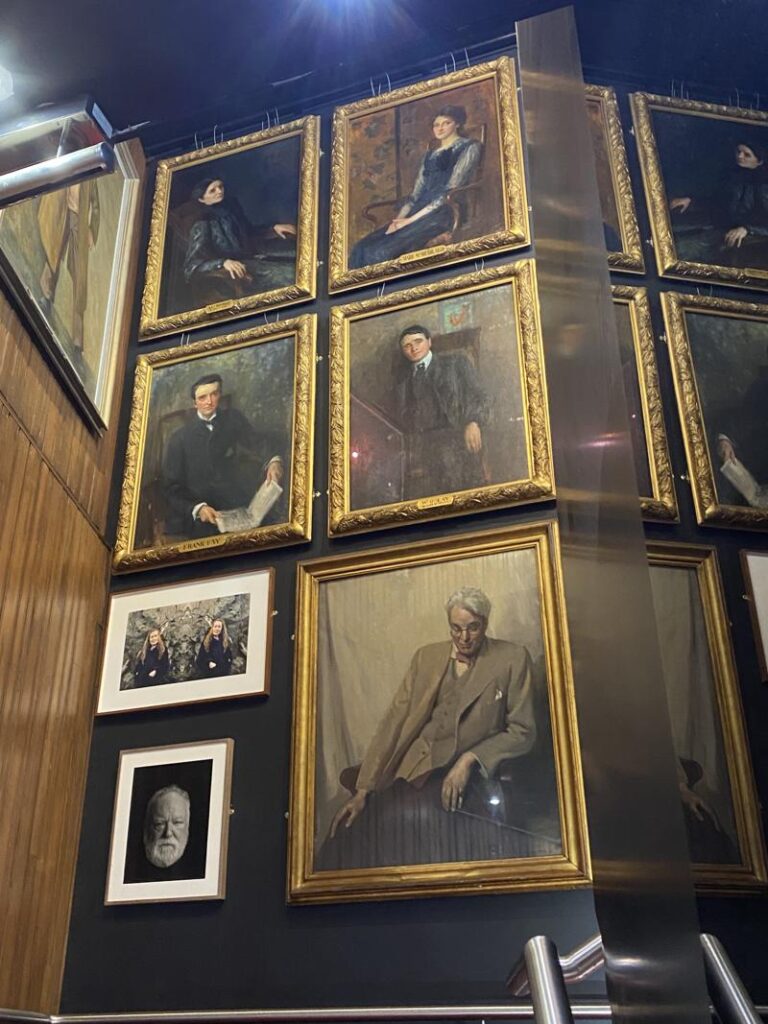Abbey Theatre – Dublin’s National Theatre
Written By: Gail Clifford | Published By: Weekend Notes | August 10, 2023
A Journey through Abbey Theatre’s Storied Backstage History Nurtured by Visionaries, Crafted by Rebels

The Abbey Theatre Exterior Dublin
From the fertile minds of W.B. Yeats and Lady Gregory emerged the Abbey Theatre, an enduring symbol of Ireland’s artistic soul. Established in 1904, this national theatre was more than just a stage; it was a canvas for the nation’s emotions, a stage for the spirit of Ireland to be unveiled in all its profound shades. Remember, this island only gained its independence as England’s first colony in 1922, so to have a national theatre before one has a nation remains quite unique. Yeats and Gregory, the trailblazing architects of this cultural haven, imbued it with purpose, as echoed in their manifesto: “to bring upon the stage the deeper emotions of Ireland.”

Abbey Theatre Logo
Our journey through the Abbey Theatre’s backstage tour began in the lobby, where we were greeted by a symphony of sights and sounds. The rich history of this iconic institution came alive as we navigated through the initial segment of the tour, accompanied by the unexpected soundscape of passing Luas trams. While the quality of sound in the lobby may have been challenged, the spirit of the Abbey Theatre’s past echoed around us, reminding us of the persistence and resilience that have marked its existence. Its very logo, prominent between the theatre’s entry doors, reflects its Irish past with an Irish warrior queen and a wolfhound.

Abbey Theatre Initial Stairwell Portraits
A Glimpse into the Past
As we endured the Luas noise, we were transported to a time when visionaries like Annie Horniman, a pivotal founding member, provided not just financial support, but also infused the theatre with a passion for the arts. Her tea plantation heiress presence (her family “put the tea in tea bags”) was palpable as we learned of her early unwavering commitment to Yeats’ vision and the revival of Gaelic culture.
W.B. Yeats, from his staircase portrait, seemed to whisper tales of his poetic brilliance and his unyielding dedication to Irish identity. Above him to the left, Lady Augusta Gregory’s portrait encapsulated the essence of her tireless efforts to incorporate Gaelic elements into the theatre, infusing it with a unique Irish spirit.
From Rebellion to Resilience
In the midst of Luas-induced reverberations, we explored the early years of the theatre, the key actors from playwrights to sponsors to … well, actors. The Fay Brothers’ contribution to shaping the theatre’s trajectory. John Millington Synge’s portrait spoke volumes about his transformative plays that dared to elevate the voices of ordinary people, stirring both controversy and reflection.
The Luas noise faded as we moved away from the lobby, welcoming us to a quieter space, resonating with the portraits adorning the staircase.
Transcending Borders
The portraits lining the staircase bore witness to the enduring impact of playwrights like Brian Friel, whose exploration of cultural and linguistic identity reverberated in his acclaimed work “Translations.” As we ascended, we allowed ourselves full immersion into the stories these portraits had to tell. Especially the two American middle school theater teachers amongst the group.
Tom Murphy’s evocative storytelling, often centred around the immigrant experience, was a soothing contrast to the earlier distractions. His portrait stood as a beacon of reflection on themes like emigration and cultural displacement.
Gail Clifford
Latest posts by Gail Clifford (see all)
- We Were Warned: An Anthology of Short Stories - October 23, 2024
- Exploring Dublin’s Royal Canal: A Journey Through Time and Nature - September 30, 2024
- The 8 Best Dr. Phillips Restaurants | Dr. Phillips, West Orlando, Florida - September 19, 2024
- Discover Cascais, Portugal - September 18, 2024
- The Ultimate Expat Guide How to Buy Property in Costa Rica, Ireland and the USA With Less Stress - September 17, 2024

0 Comments